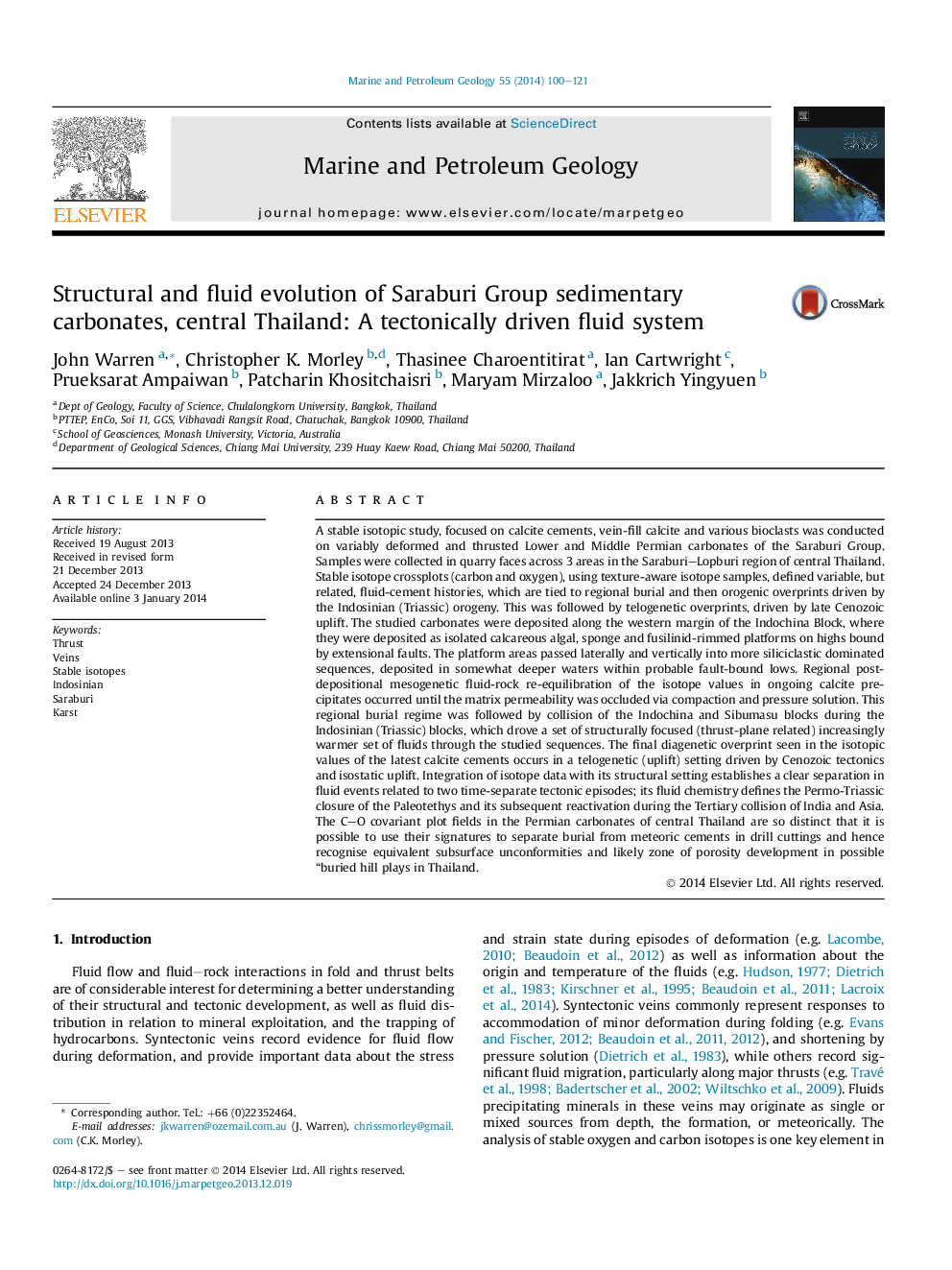| کد مقاله | کد نشریه | سال انتشار | مقاله انگلیسی | نسخه تمام متن |
|---|---|---|---|---|
| 6435428 | 1637169 | 2014 | 22 صفحه PDF | دانلود رایگان |
- Different phases of tectonic development seen in stable isotope of calcite veins.
- Stable isotopes define clear burial trend, with thrusts focusing the warmest fluids.
- An isotope template allows separation of burial and meteoric cements in Thailand.
- A C-O signature set that can be used with drill cuttings.
A stable isotopic study, focused on calcite cements, vein-fill calcite and various bioclasts was conducted on variably deformed and thrusted Lower and Middle Permian carbonates of the Saraburi Group. Samples were collected in quarry faces across 3 areas in the Saraburi-Lopburi region of central Thailand. Stable isotope crossplots (carbon and oxygen), using texture-aware isotope samples, defined variable, but related, fluid-cement histories, which are tied to regional burial and then orogenic overprints driven by the Indosinian (Triassic) orogeny. This was followed by telogenetic overprints, driven by late Cenozoic uplift. The studied carbonates were deposited along the western margin of the Indochina Block, where they were deposited as isolated calcareous algal, sponge and fusilinid-rimmed platforms on highs bound by extensional faults. The platform areas passed laterally and vertically into more siliciclastic dominated sequences, deposited in somewhat deeper waters within probable fault-bound lows. Regional post-depositional mesogenetic fluid-rock re-equilibration of the isotope values in ongoing calcite precipitates occurred until the matrix permeability was occluded via compaction and pressure solution. This regional burial regime was followed by collision of the Indochina and Sibumasu blocks during the Indosinian (Triassic) blocks, which drove a set of structurally focused (thrust-plane related) increasingly warmer set of fluids through the studied sequences. The final diagenetic overprint seen in the isotopic values of the latest calcite cements occurs in a telogenetic (uplift) setting driven by Cenozoic tectonics and isostatic uplift. Integration of isotope data with its structural setting establishes a clear separation in fluid events related to two time-separate tectonic episodes; its fluid chemistry defines the Permo-Triassic closure of the Paleotethys and its subsequent reactivation during the Tertiary collision of India and Asia. The C-O covariant plot fields in the Permian carbonates of central Thailand are so distinct that it is possible to use their signatures to separate burial from meteoric cements in drill cuttings and hence recognise equivalent subsurface unconformities and likely zone of porosity development in possible “buried hill plays in Thailand.
Journal: Marine and Petroleum Geology - Volume 55, August 2014, Pages 100-121
